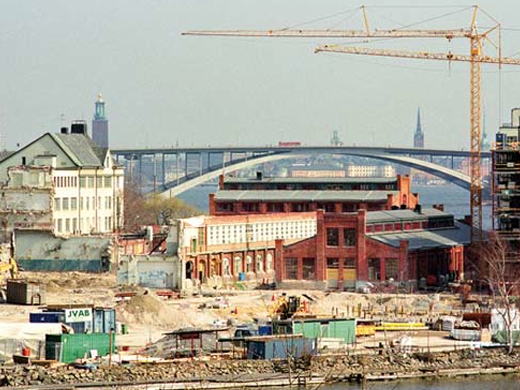Tracking Hazardous Substances in Cities

This Research in Action article was provided to LiveScience in partnership with the National Science Foundation.
How can substances that enter, are stored and emitted in urban environments be measured? In Stockholm, Sweden a methodology called substance flow analysis (SFA) has been used extensively for this purpose. SFA brings clarity to the inflows, stocks and outflows of a given system. Years of environmental regulations have decreased pollution from point sources, yet dangerous substances contained in widespread diffuse sources — such as goods, products and buildings — remain hazardous.
So, despite phase-out policies, regulations, planning, and systematic thinking, the diffuse emissions of hazardous substances from goods and materials still accumulate in society. This is most pronounced in urban areas, since such emissions are related to high densities of people, services and goods.
The photo above captures the city of Stockholm as it is changing, which is actually what we are trying to measure in our study. It also brings one's thoughts to the historical buildings that exist together with modern everyday life in a city. In the background, to the left, is the City town hall.
Our paper sets out to discuss several studies of diffuse pollution from hazardous substances. The substances include lead, cadmium, copper and organic substances such as alkylphenols. The aim is to examine the utility of substance flow analyses (SFAs) for urban management of hazardous substances. From 1995 to 2007, several SFAs in Stockholm have been conducted. We selected eleven case studies to examine specific factors involved in the practical application of SFA.
Is the knowledge about diffuse emissions useful for policymakers and in what way have the results been utilized? As far as ongoing environmental management is concerned, the SFAs' results have been implemented to address several local environmental objectives. Citations and use of the SFAs show that they have had a strong influence on local policy.
In implementing the results of the Stockholm studies, it is important to have both the environmental monitoring — which indicates the existence of hazardous substances in different environmental compartments — and SFAs that map and monitor sources of emissions.
Get the world’s most fascinating discoveries delivered straight to your inbox.
Details of the findings are available in the Journal of Industrial Ecology as part of a special issue on Applications of Material Flow Analysis, funded in part by the Environmental Protection Agency and the National Science Foundation.
Any opinions, findings, and conclusions or recommendations expressed in this material are those of the author and do not necessarily reflect the views of the National Science Foundation. See the Research in Action archive.
- Nina Månsson, University of Kalmar, Sweden



